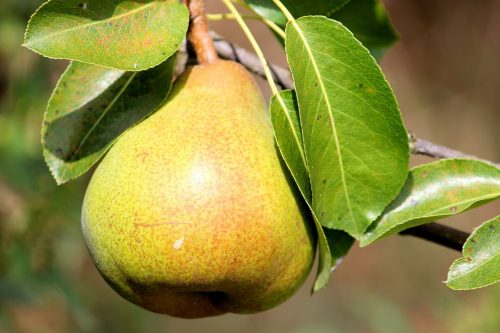Pear tree, fruit tree for vegetable and ornamental gardens.
You are viewing the mobile-adapted version of the page.
The one for tablets, laptop and desktop also offers general information.
Pear (Pyrus) is usually grafted on a slow-growing rootstock. Pears are mostly found in countries in the northern hemisphere.
There are hand pears, juicy and sweet, and stewing pears, hard and dry. Stewed pears must first be boiled (stewed) to be edible.
Pears like a nutrient-rich, slightly moist soil. On sandy soils, the pear tree soon needs extra water in summer. Pear trees should also not be too wet.
First years a pear tree does not need pruning. Pears grow on horizontal branches. Give the pear a hand by bending suitable branches horizontally. Pear trees can produce so many branches that not enough light enters the tree and the pears do not ripen. Prune away old branches regularly so that light and air reach the heart of the tree.
Pears are ready for picking when you can nod or twist the pear on the tree. Then let them go easily, then they are ready to pick. As pears ripen, the pips change color from white to black: pears with brown pips are ready to pick; those with black pips are ready to eat.
Bugs
Black discolored, affected bark with tunnels behind it, crown withered, thin twigs curled: sinuate peartree borer (Agrilus sinuatus).
Holes in fruit principles, fall off early: pear sawfly (Hoplocampa brevis).
Dot-shaped spots on the leaves, mites on the underside: red spider mite (Tetranychus urticae).
Feeding on sprouting buds and young leaves: caterpillars of the winter moth (Operophtera brumata).
Worm-eaten fruits early in spring; red spot around the bore: codling moth (Cydia pomonella).
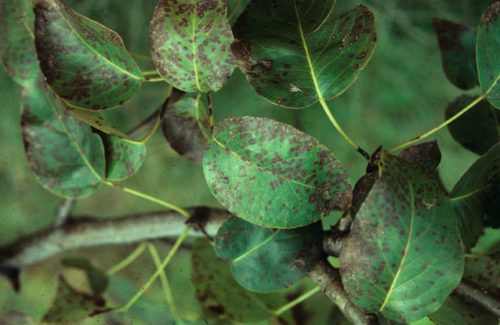
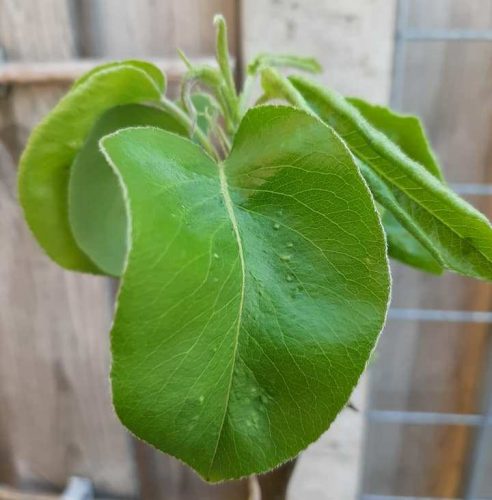
In early spring, green bumps (pear drops) appear on the young leaves. During the season, the bumps grow into galls on the leaves, fruit stalks and ovaries. These discolor from green through yellow to red, eventually the galls turn black: Pear blister mite (Eriophyes pyri).
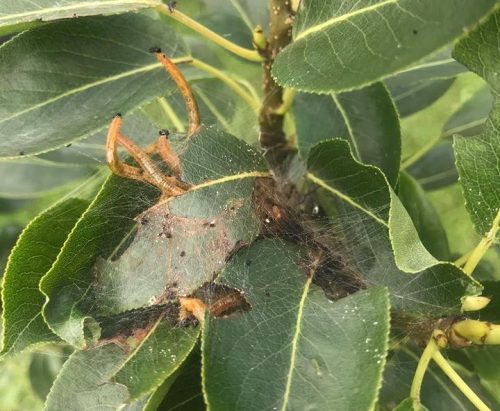
Spins with orange caterpillars among the leaves: larvae of the Little Ermel (Swammerdamia pyrella), an ermine month.
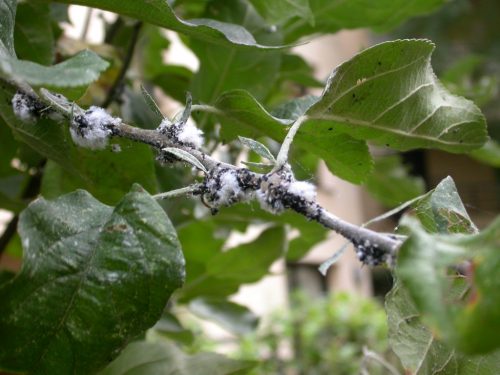
White sticky fluff, later followed by galls and woody outgrowths: Woolly apple aphid (Eriosoma lanigerum).
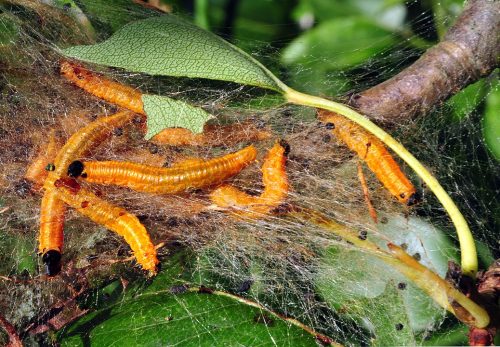
Late June, early July brownish spins of + 10 cm appear between the leaves. Poop remains hang in the fabric, dark yellow caterpillars crawl around: larvae of the Social Pear Sawfly (Neurotoma saltuum).
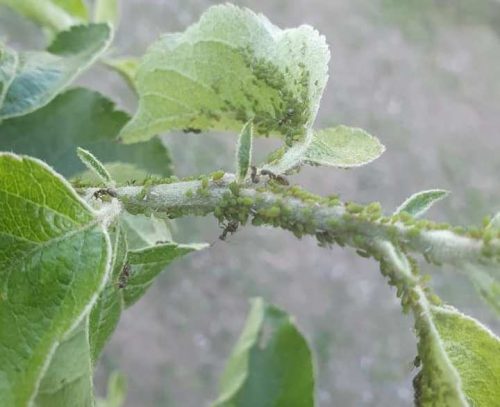
Green aphids on new shoots – especially in summer. The new shoots curl through the aphids and are somewhat inhibited in growth. In early spring they are only slightly visible: Green apple aphid (Aphis pomi).
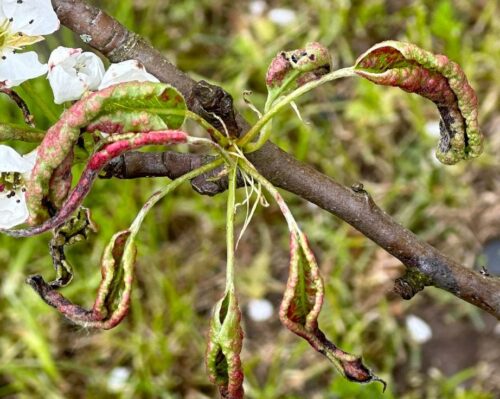
Small yellow-green galls form on or under the leaves. These turn pink and later the galls and leaves turn black as the affected areas die. The leaves curl, show red and black spots, dry up and fall off. Inside the curled leaf are one or more caterpillars: the larvae of the Pear Leafcurling Midge (Dasineura pyri).
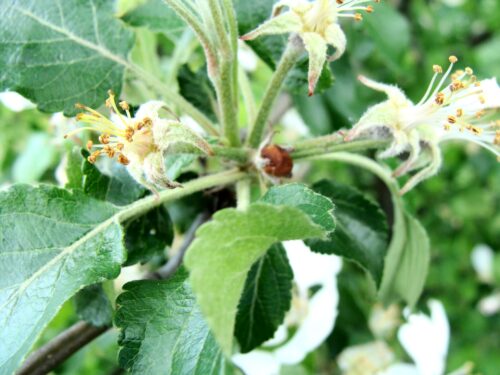
In spring, the buds do not sprout. The remaining bud appears to be completely hollowed out and there is a larva or pupa inside the empty bud: pear bud weevil (Anthonomus piri). Because the pear bud weevil also eats away at the leaf buds, there can be a lot of damage to the pear tree. Harvest lags and new shoots fail to form.
Fungi & diseases
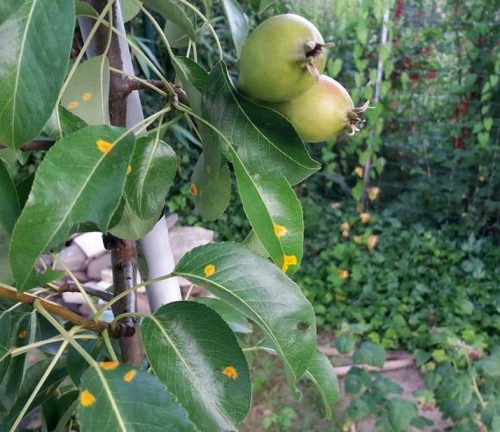
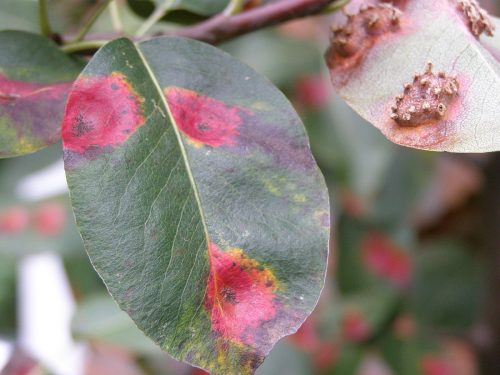
Dark orange spots with brown centers on the leaves, these turn to red and grow into an orange bump: Tongues of Fire (Gymnosporangium clavariiforme).
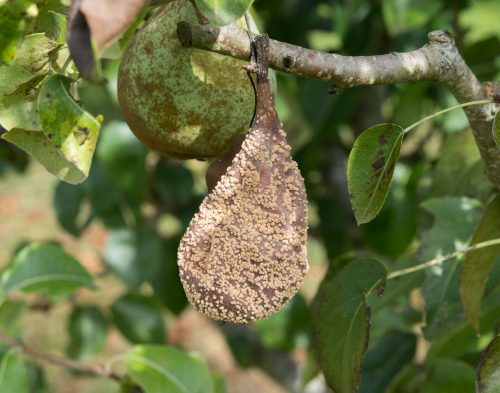
Browning pears with fungal spores: Brown rot (Monilinia spp.).
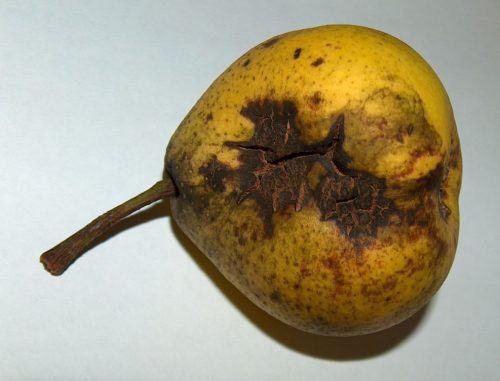
Corky spots on pears: pear scab (Venturia pyrina).
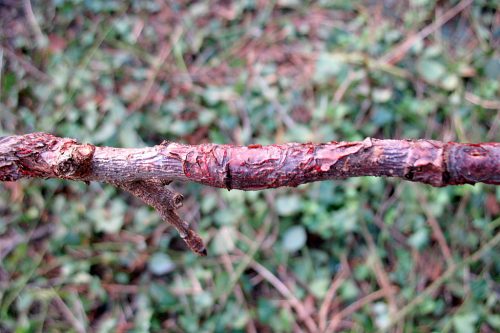
Bark cracks, branch wilts and red fungal fluff appears: Apple canker (Neonectria ditissima).
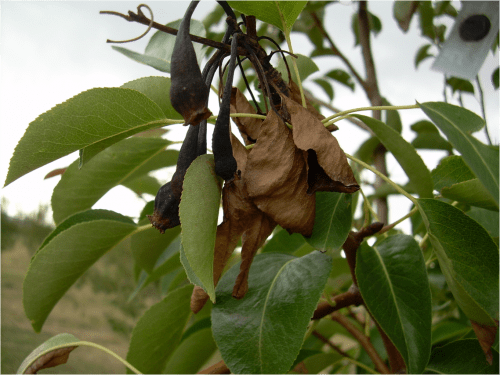
Blossom, leaf, branch and twig turn brown-black and shrivel, thickened spots: Fire blight (Erwinia amylovora).
Rotten spots on pears; sometimes around the stem and sometimes on the nose: Neonectria (Neone
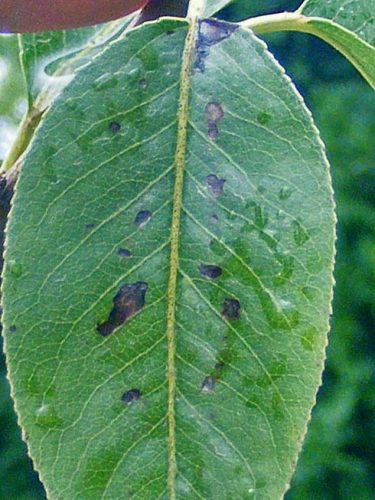
Dark brown, black spots develop on the leaves. The main vein of the leaf also turns black. Eventually, the whole leaf turns black, after which it falls off. On the ripening fruit, one on several sunken black spots develop, often with a red Xr
On the skin of the pear, during storage, or in storage, a reddish-brown dot forms, which quickly grows larger and develops into a round dark brown spot: bitter rot (Neofabraea).
Other
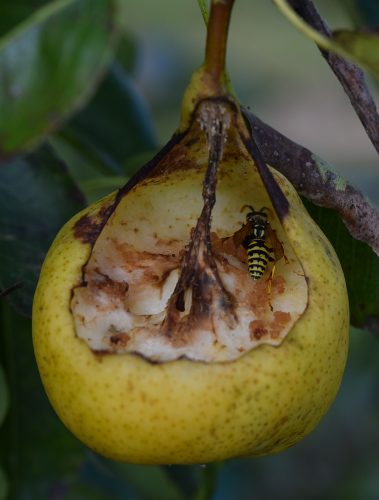
Wasps sometimes attack fruit.
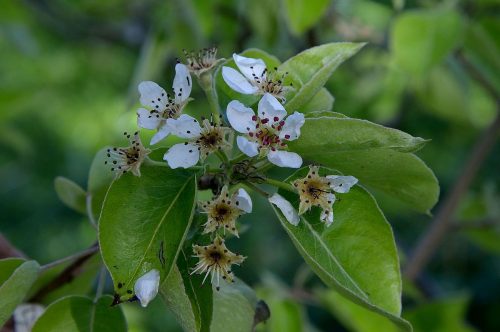
Brown-black discolored parts of blossoms: damage from night frost.
Pear rots from the inside out; the outside looks flawless, while the inside is gross and watery: Internal browning.
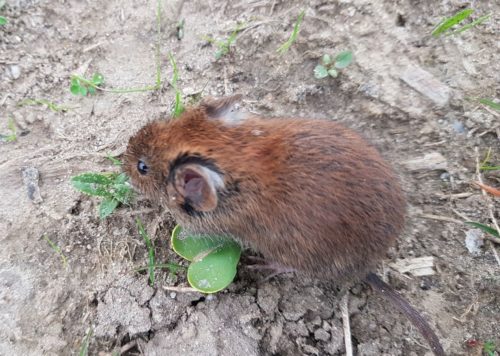
Young pear trees grow slowly; leaves do not appear; the roots have been eaten away: voles.
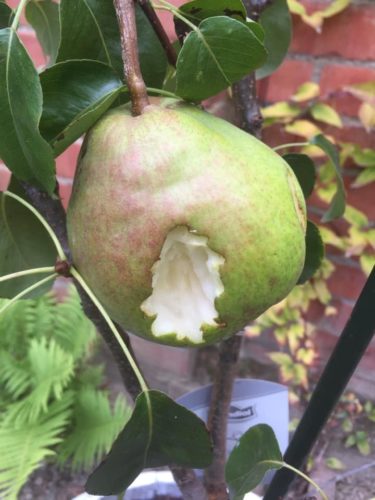
Holes in nearly ripe pears: damage by birds.
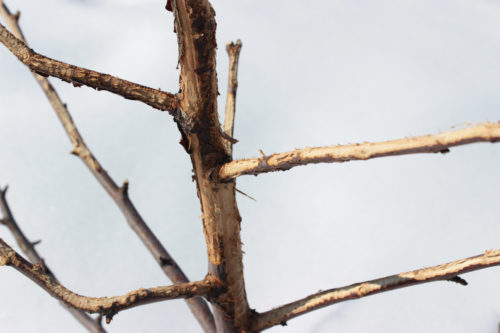
In winter, hares, rabbits and deer sometimes like to gnaw on the branches and trunk of the pear tree.
Vertical cracks in the bark of the trunk: Bark cracks.
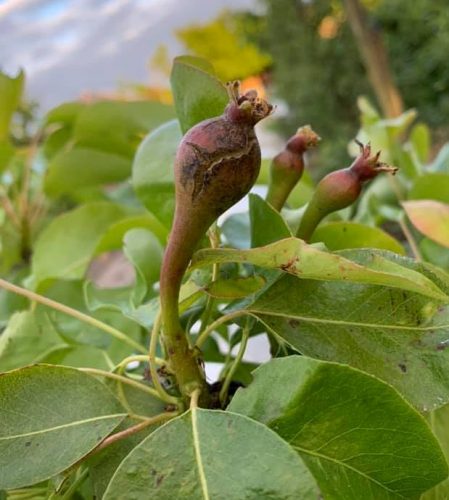
Cracks – sometimes to the core – in early May in early pears: frost damage or the result of a growth spurt due to highly variable weather. Do grow closed again, but scar remains. Extensive growth of shoots often develop in cold and wet weather, followed by summer heat, Conference is sensitive to this.
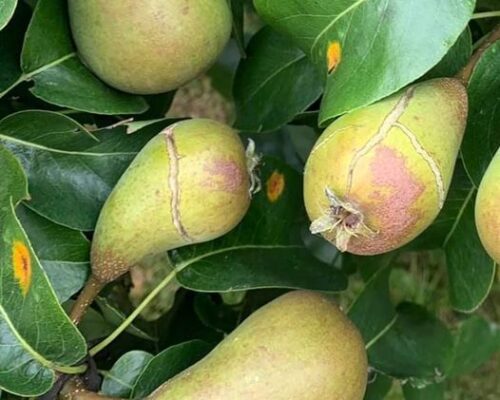
Nearly ripe pears show cracks. This is caused by irregular water uptake after a relatively dry period followed by a lot of rain. The pears literally burst out of their skin. Quickly harvest and eat.
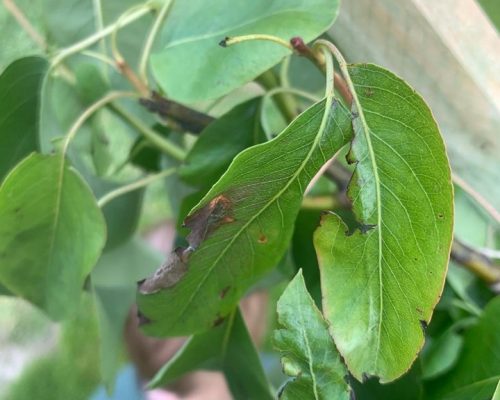
Brown, withered spots, damaged leaves: wind damage to young leaves.
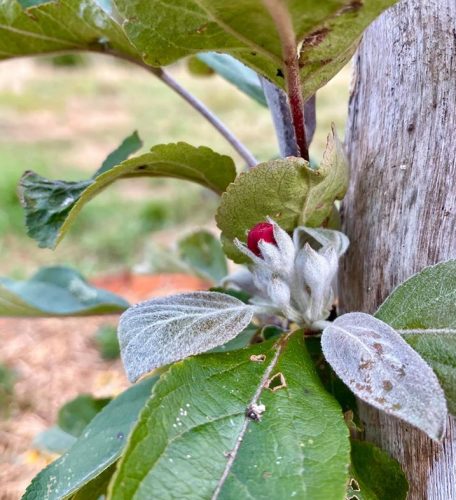
After spring, the young pears can already be seen, the tree blooms with some blossoms here and there: after flowering. Remove this blossom, preferably before the flowers have opened. This blossom does not lead to fruit but can form an entrance for fire blight.
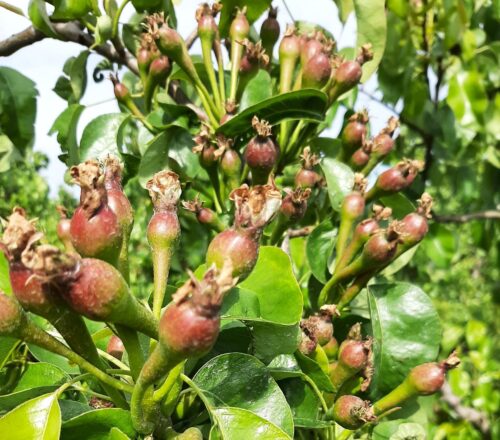
Fruiting follows after flowering. Usually there is an excess of small fruits. Between late May and mid-June, however, many pears fall off: the June molt. A natural process in which the tree rejects all weak fruits. See also fruit thinning.

